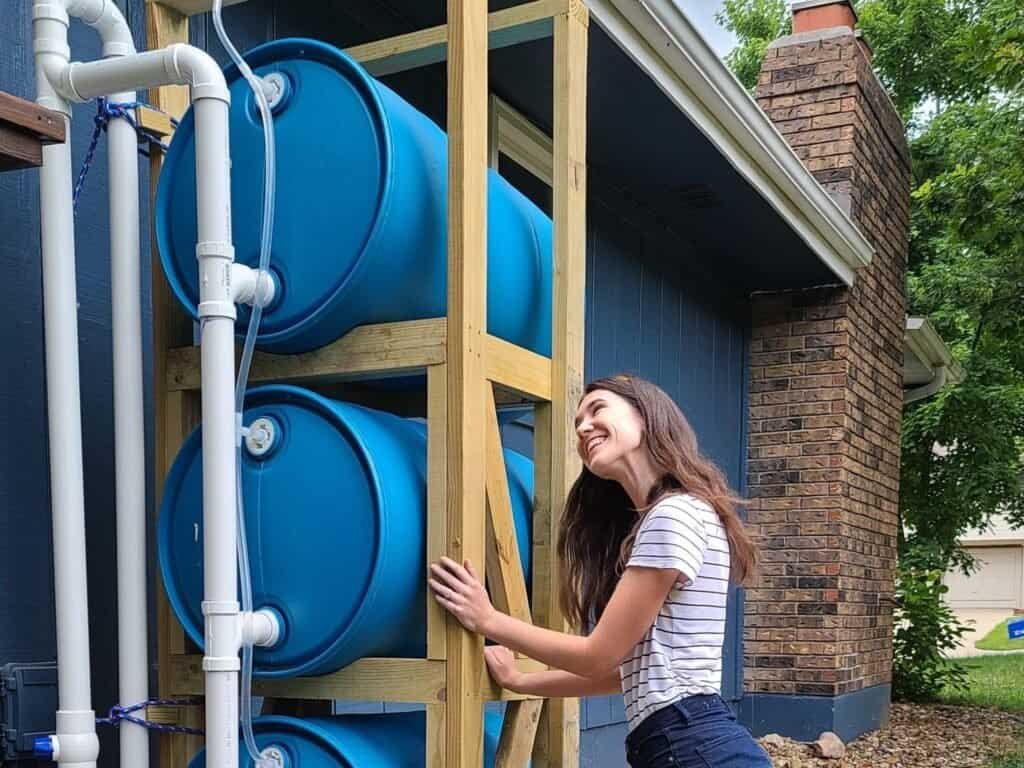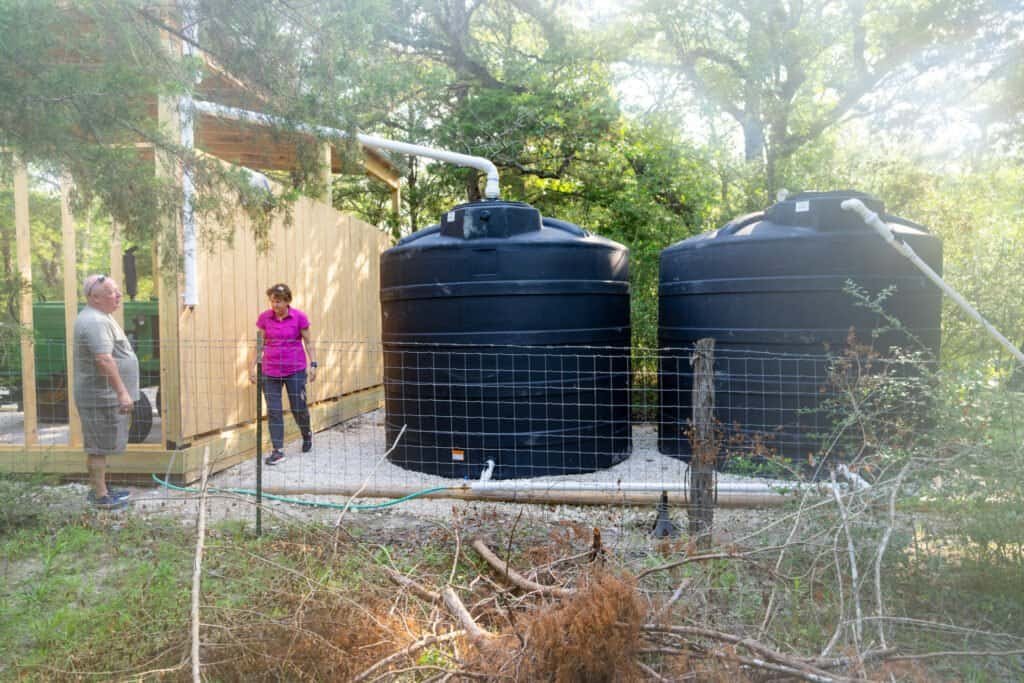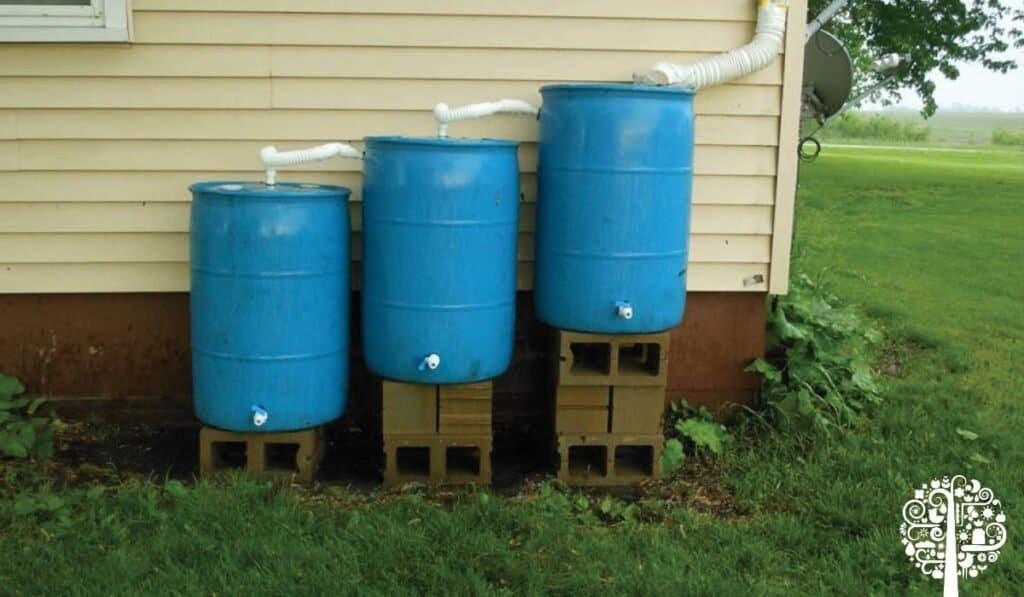Collecting rainwater is an ancient practice that has evolved into a sophisticated method for sustainable living. A rainwater collection system captures and stores rain for later use, providing an alternative to relying solely on municipal sources or wells. This guide will explore the intricacies of rainwater harvesting, helping you to understand how to effectively gather, store, and use this natural resource.
With an emphasis on practicality, we’ll dispel myths, and delve into system components, techniques, and best practices to ensure your setup is efficient and beneficial. By the end, you’ll be equipped with the knowledge to implement a system that not only saves money but also contributes to a healthier environment.

Understanding Rainwater Collection
Rainwater collection is ideal for cities with water restrictions, promoting self-sufficiency while conserving precious resources. Socially acceptable and environmentally sound, these systems can be retrofitted to an existing structure or built new, allowing expansion as needs grow.
Besides reducing stormwater runoff and alleviating drainage problems, rainwater serves as a supplementary source to wells and municipal supplies, proving to be a reliable backup source in times of scarcity.
The Basics of Rainwater Harvesting
At its core, rainwater harvesting systems are designed to capture and store rainwater, particularly falling on your roof. The collected water is funneled into a rainwater storage tank, where it can be used for various non-potable purposes. This method not only leverages an otherwise untapped resource but also reduces the load on conventional water supply systems.
Advantages of Implementing a Rainwater Collection System
When you collect rainwater, you gain autonomy in managing your own water supply. Integrating a downspout filter and rainwater filtration ensures the water is clean, which, when installed on the tank, enhances the quality further.
Rainwater tanks are central to the system, storing the harvested water, while a pump system facilitates distribution. A flush diverter is crucial for discarding the first flow of rain, which carries most of the debris and contaminants.
Common Myths and Misconceptions
Many believe rainwater collection is too complex or costly, yet simple systems can be highly effective and affordable. Another misconception is that rainwater is unsafe, but with proper filtration and regular maintenance, it can be a secure source for many uses. Lastly, some think rainwater harvesting is illegal; however, it is permitted and even encouraged in many regions, provided local regulations are followed.
System Components and Design
A well-designed rainwater collection system includes a network of collection pipes that channel water from catchment areas to storage vessels. These pipes are crucial for maximizing the volume of water harvested and ensuring efficient water flow to the storage solutions.
Catchment Areas and Their Significance
Rainwater harvesting systems depend on catchment areas, typically roofs, to collect rain. The material, slope, and size of the catchment area significantly impact the quantity and quality of the harvested water, making it a fundamental component in the design of an efficient system.
Storage Solutions – Tanks and Barrels
Crucial to any rainwater collection system are the tanks and barrels where the water is stored. These come in various sizes and materials and can include features such as downspout diverters to direct rainwater into the storage containers while keeping debris out.
Above-Ground vs Below-Ground Options
Choosing between above-ground and below-ground storage options depends on space, budget, and personal preference. Each has its own set of advantages and considerations, which should be carefully evaluated to determine the best fit for your rainwater collection system.
Sizing Your Storage: What Capacity Do You Need?
Your storage capacity should align with the annual average rainfall in your area. By understanding the average rainfall and your water usage needs, you can determine the size of your rainwater tank to ensure an adequate supply throughout the year.

Rainwater Collection Techniques
Rainwater collection techniques vary, suited to different needs and contexts. They can be particularly ideal for cities with water restrictions, where water conservation is critical. These techniques can be modular in nature, allowing expansion and adaptation to changing water demands, serving as a backup source, and mitigating drainage problems.
Barrel Systems for Beginners
Beginners looking to collect rainwater can start with a simple barrel system. A downspout is used to collect rainwater from the roof, directing it into barrels that typically hold between 50 to 100 gallons. This is an excellent way to start harvesting rain for garden irrigation and other outdoor uses.
Dry System Collection Methods Explained
Dry system collection methods involve the direct funneling of rainwater from the catchment area into a storage vessel. This method is straightforward and effective for areas that experience sporadic, heavy rainfall.
Wet System Innovations in Rainwater Harvesting
Wet system innovations are designed to collect rainwater in a network of pipes that fill an underground cistern. This system is particularly useful for large-scale collection and can be implemented in both residential and commercial properties.
Calculating Rainwater Collection Potential
Understanding the potential for rainwater collection involves assessing your property’s ability to capture and store rainwater while considering factors such as local climate and the likelihood of drainage problems that could affect collection efficiency.
Measuring Your Roof’s Contribution to Rain Harvest
To evaluate your roof’s role in rainwater harvesting systems, start by calculating the total catchment area. Multiply the roof’s length by its width, then adjust for the slope. Recognize that not all surfaces are equally effective; metal roofs capture more rainwater than more absorbent materials like asphalt shingles. Factor in the coefficient of runoff for your specific roofing material to get a more accurate estimate of your roof’s rainwater-catching potential.
Estimating Collection Volumes Based on Precipitation
To estimate the amount of rainwater you can collect, you’ll need local rainfall data. Check historical averages for your area and use a simple formula: Catchment area (square feet) x Rainfall (inches) x 0.623 gives you the volume in gallons. This number represents your potential collection during any given rain event, helping you plan your storage needs accordingly.
Installation and Maintenance
Proper installation and regular maintenance are crucial for a functional rainwater collection system. Ensure all components are compatible and designed for the specific demands of your climate and landscape.
Regular inspections can prevent blockages and leaks, while consistent system evaluations can help identify parts in need of repair or replacement, ensuring optimal performance year-round.
Step-by-Step Guide to Setting Up Your System
Installing a rainwater collection system begins with positioning your storage tank, followed by attaching the collection pipe from the roof to the tank. Ensure a secure connection to prevent leaks.
Install a first-flush diverter to improve water quality, and set up an overflow outlet. Finally, connect your distribution system, whether it’s for irrigation or indoor use, ensuring you have all the necessary filters in place.
Maintenance Tips for Long-Term Efficiency
To maintain efficiency, regularly inspect and clean your system. Look for debris in gutters and screens that can obstruct water flow. Check for algae growth in the tanks, and ensure the first flush diverter and filters are clear to harvest rainwater effectively. Consistent monitoring will help detect issues early, safeguarding your water supply and extending the life of your system.
Routine Cleaning and Upkeep
Regular cleaning of your rainwater collection system is essential. Clear gutters, downspouts, and screens of leaves and debris to prevent clogs. Inspect your tank for sediment buildup and clean it annually. Maintain the system’s pump and treatment filters according to the manufacturer’s guidelines to ensure continued operation and water quality.
Winterizing Your Rainwater Collection System
As colder weather approaches, it’s important to prepare your rainwater tanks to prevent freezing. Drain pipes and tanks to avoid damage from expanding ice. Insulate exposed pipes and consider adding a heating element to tanks if temperatures drop significantly. Check all components for wear and tear, and replace them if necessary to ensure they withstand the winter months.

Rainwater Usage and Application
Collected rainwater has a multitude of applications, from watering gardens to flushing toilets. By integrating a harvesting project into your home, you can reduce reliance on municipal systems, lower water bills, and create a more sustainable household. With proper treatment, rainwater can also be used for showering and laundry, further maximizing its utility.
Practical Uses for Collected Rainwater
Rainwater collection can address various needs as population growth puts a strain on traditional water sources. Use harvested rainwater for your garden, reducing the demand for potable water supplies.
Fill your swimming pool, wash your car, or connect to your home’s plumbing for toilet flushing. Each application eases the pressure on municipal systems and benefits the environment.
Irrigation and Gardening with Harvested Rain
Using collected rainwater for irrigation not only conserves potable water but also provides your plants with soft, chemical-free water. Design your garden with rainwater harvesting in mind, utilizing drip irrigation or soaker hoses for efficient water distribution. This approach encourages deeper root growth and healthier plants, contributing to a more sustainable garden ecosystem.
Rainwater in the Home: Non-Potable and Potable Uses
Aside from irrigation, harvested rainwater can serve many non-potable purposes in your home. Use it for washing clothes or as a supply for your toilet, significantly reducing your freshwater footprint. With additional filtration and purification, rainwater can even be made potable, providing an alternative water source as population growth increases demand.
Conclusion on Rainwater Collection Systems
Throughout this guide, we’ve explored the multifaceted aspects of rainwater collection systems, from the basic components like gutters and downspouts to more complex in-ground rainwater collection system designs. We’ve demystified the process of rain harvesting, highlighting the environmental benefits and debunking common myths.
By understanding the rainwater collection potential of your property and implementing the right system control strategies, you can efficiently manage collected rainwater for various applications.
Storage solutions, system maintenance, and appropriate usage have been emphasized to ensure that your rainwater collection endeavors are both sustainable and rewarding. Remember, every drop counts and your commitment to rainwater collection systems is a step towards a more sustainable future.


